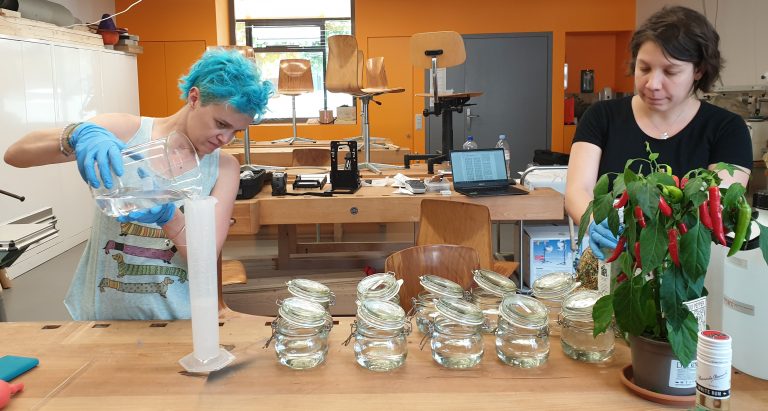The aim of this project is to deepen the knowledge of conservation issues of botanical wet collections (plants in fluid) in order to propose adapted protocol for their correct preservation.
Project short description
The aim of this project is to deepen the knowledge of conservation issues of botanical wet collections (plants in fluid) in order to propose adapted protocol for their correct preservation.
Link to the blog
Project description and aims
The aim of this project is to deepen the knowledge of conservation issues of botanical wet collections (plants in fluid) in order to propose adapted protocol for their correct preservation.
From a material point of view, the correct combination of fixing procedures, preservation fluid, container and sealant for a long lasting specimen’s conservation will be investigated for various categories of plant species. From an immaterial point of view, part of the research will be dedicated to the investigation of the cultural values owned by these artefacts and the optimal way to maintain them in time.
More information about the project LIQUOR (01.02.2021 – 31.08.2022)
More information about the project FLUIDIS (01.04.2019 – 31.03.2020)

Fundings
- HES-SO, Réseau de Compétences Design et Arts visuels
Team
Laura Brambilla (project leader) – conservation scientist
Marion Dangeon – conservator, specialized in natural history collections
Elodie Granget – conservator, specialized in scientific and technical collections
Partners
Botanical Museum of the University of Zurich
The collection of the former Botanical Museum was founded by Hans Schinz in 1895. It comprises around 25,000 objects of scholarly, biocultural, and historical importance. The botanical curiosities have their origin in research expeditions that were led on every continent and reveal fascinating secrets about botanical history and the many complex relations between plants and human beings. There are fossils from the Miocene epoch, plant remains from pile dwellings (“Pfahlbausiedlungen”), grave decorations from Ancient Egypt, indigenous and exotic wood, fruits, seeds, and flowers, over-sized models of flowers, and dioramas.
University of Neuchâtel
Located between Geneva, Berne and Zurich, the University of Neuchâtel comprises four faculties with some 4,200 students, 50% of whom come from other Swiss cantons and 22% from abroad. The university offers a wide range of bachelor’s degrees, as well as master’s degrees in the humanities, law, science and economics, many of which are original and all of which are recognised by the Bologna Declaration, making them euro-compatible.
Publications
- Dangeon, M., Cornet, E., Brambilla, L., 2020. Conservation-Restoration of a Botanical Museum Fluid Collection: Practice and Research. Collection Forum 34, 143–156. https://doi.org/10.14351/0831-4985-34.1.143
- Granget, E., Dangeon, M., and Brambilla, L. 2022. Losing colour: the discolouration of plants in spirit
preserved collections. Journal of Natural Science Collections 10. 60-80.
- Latty, J., Granget, E., Dangeon, M., Brambilla, L. Prévenir le brunissement du fluide de conservation des spécimens botaniques. Bulletin de la société neuchâteloise des sciences naturelles 141. 25-39
Posters
20th ICOM-CC Triennial Conference, 18-22 September 2023, València, Spain
Conferences
- Natural Science Collections Association Conference, Twitter, January 21st 2021, #NatSCAConservation.
Link to the program of the conference.
- ICOM NatHIST Virtual Conference, Collections as a challenge for research, 13-15 September 2021.
Link to the page of the conference
- « Natural History Wet Collections – Symposium chair. SPNHC 2022, Edinburgh, Scotland, UK. June 5th – 10th June 2022.
Link to the page of the conference
- 20th ICOM-CC Triennial Conference, 18-22 September 2023, València, Spain




